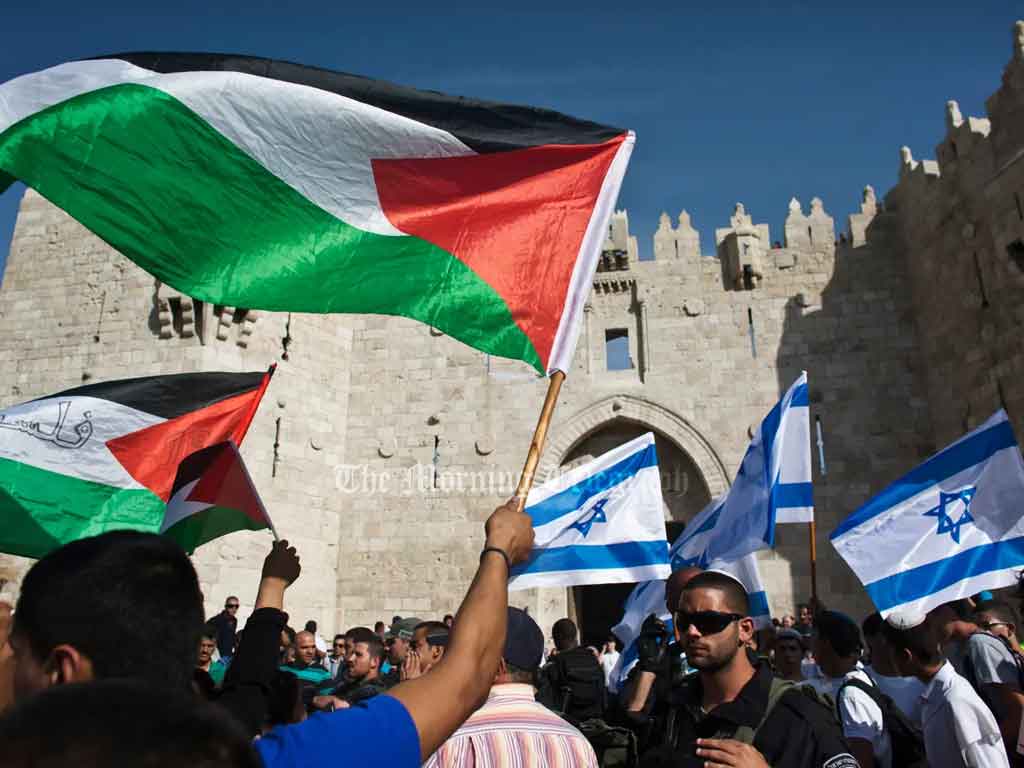
A comprehensive ceasefire agreement between Israel and Hamas is reportedly set to be implemented in Gaza. According to sources familiar with the negotiations, the deal outlines a three-phase process designed to address the humanitarian crisis, ensure military withdrawals, facilitate prisoner exchanges, and rebuild Gaza. The agreement, brokered by the United States, Qatar, and Egypt, aims to establish long-term peace after 15 months of devastating conflict.
Phase 1: Temporary Suspension of Hostilities (42 Days)
- Ceasefire and Israeli Withdrawals
Both sides will halt all military operations. Israeli forces will withdraw from populated areas in Gaza, including key locations such as Wadi Gaza, Netzarim Axis, and Kuwait Square, and reposition to areas closer to the border. This step is designed to de-escalate tensions and allow displaced Palestinians to return home. - Restrictions on Air Operations
To maintain peace, Israel will suspend military and reconnaissance flights over Gaza for 10 hours daily, extending this to 12 hours on days when hostages and prisoners are exchanged. - Resettlement of Displaced Persons
- On Day 7, following the release of seven Palestinian prisoners, Israeli forces will withdraw from Al-Rashid Street to Salah Al-Din Street, dismantling military installations. Displaced Palestinians will return home, and humanitarian aid will begin flowing through Al-Rashid Street.
- On Day 22, Israeli forces will vacate central Gaza, dismantling military posts in the Netzarim Axis and Kuwait Square. This will enable more displaced families to return and restore freedom of movement.
- Humanitarian Aid and Supplies
From the first day of the agreement, Gaza will receive a significant influx of humanitarian aid. Approximately 600 trucks, including 50 fuel trucks, will enter daily, providing food, medical supplies, fuel for hospitals, and support for rebuilding infrastructure. - Hostage and Prisoner Exchanges
- Hamas will release 33 Israeli hostages, prioritizing women, children under 19, the elderly, and the injured.
- For each Israeli civilian released, Israel will free 30 Palestinian minors or women. For every female Israeli soldier released, 50 Palestinian prisoners will be freed.
- Release Schedule
Hostage releases will occur weekly, starting with three Israeli civilians on Day 1 and culminating in Week 6, with corresponding Palestinian prisoner releases. - Additional Releases
By the end of Phase 1, Israel will release 47 Palestinians re-arrested after the 2011 exchange deal. All women and minors detained since October 7, 2023, will also be freed. - Compliance and Oversight
The continuation of prisoner exchanges and aid delivery will depend on strict adherence to the ceasefire terms and troop withdrawal agreements. Released Palestinian prisoners will not be re-arrested for the same charges or subjected to restrictive conditions.
Phase 2: Negotiations for Permanent Ceasefire (42 Days)
- Indirect Negotiations Begin
Talks will start on Day 16 to establish terms for the release of remaining Israeli soldiers and Palestinian prisoners. These discussions are expected to conclude by Week 5. - Establishing Long-Term Peace
A permanent ceasefire will take effect, contingent on the completion of all prisoner exchanges. Israeli forces will fully withdraw from Gaza, marking the end of military operations in the area.
Phase 3: Reconstruction and Final Exchanges (42 Days)
- Rebuilding Gaza
Both sides will exchange the bodies of deceased individuals. A large-scale reconstruction plan will commence, focusing on rebuilding homes, infrastructure, and public facilities. This process, estimated to take 3-5 years, will be overseen by Egypt, Qatar, and the United Nations. Financial compensation will be provided to affected individuals. - Freedom of Movement and Trade
Border crossings will be reopened to allow the free flow of goods and people, revitalizing Gaza’s economy and improving the living conditions of its residents.
Broader Implications
The ceasefire agreement is expected to alleviate the humanitarian crisis in Gaza and lay the groundwork for long-term peace between Israel and Hamas. The success of this agreement will depend on the commitment of both parties to adhere to its terms and the continued oversight of international mediators. If implemented effectively, the agreement could mark a turning point in the region’s history, fostering stability and initiating Gaza’s much-needed recovery.




